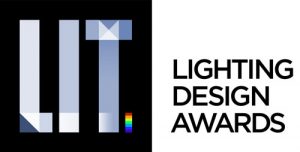National bank of Ukraine’s official rates as of 10/02/21

Source: National Bank of Ukraine

Astarta has sold Savyntsi and Novoivanivske sugar factories due to a lack of raw materials and sugar beet producers in Kharkiv region, the press service of the company has said.
The manufacturer clarified that it intends to free up internal resources in favor of the main sugar factories in Poltava, Vinnytsia and Khmelnytsky regions through the sale of non-core assets.
Astarta also noted that in 2020 the company focused on increasing the profitability of the sugar segment and optimizing production by focusing on key sugar factories.
According to the company, export of sugar from Ukraine has been under pressure from low prices in the domestic and international markets for several years, which led to the withdrawal of some producers from the market and a decrease in production.
The co-owner of the agricultural holding, Viktor Ivanchyk, said in November 2020 that Astarta planned to sell these assets.
“Last year we worked without Savyntsi plant, and this year without Novoivanivske plant in Kharkiv region. Sugar beet is not grown around these enterprises due to weather conditions. Kharkiv region is one of the regions where the drought is most acute,” he explained.
Astarta is a vertically integrated agro-industrial holding operating in eight regions of Ukraine. It includes eight sugar factories, agricultural enterprises with a land bank of 243,000 hectares and dairy farms with 25,000 animals, seven elevators, a biogas complex and a soybean processing plant in Poltava region.

Minister of Economy Ihor Petrashko expects to find such a version of the bill on amendments to the law on public procurement, which will satisfy international partners and will support the Ukrainian manufacturer.
“Without stimulating production in Ukraine and using public funds to purchase goods produced in Ukraine, there will be no significant progress in the country,” Petrashko told a news conference during the Ukrainian Forum “Ukraine 30. Coronavirus: Challenges and Responses” held on Tuesday.
According to the minister, all countries of the European Union and the United States use incentives to ensure that public funds primarily go to the purchase of those goods that are produced in their countries.
Petrashko said that at the moment consultations with the EU and the United States on the local content bill (No. 3739 on amendments to the law of Ukraine on public procurement) are underway, as the reaction to it is ambiguous.
The minister added that the use of non-price criteria will benefit Ukraine’s trade with the European Union and the United States.
“Therefore, we want to find a format of persuasion and find the version [of the bill] that will allow us to support the manufacturer,” Petrashko said.

The winners of the annual LIT Lighting Design Awards 2020 in certain categories were lighting for a Boulevard of Arts in Dnipro city, interactive media sculpture The Cube in Kyiv, the Odesa Food Market and the Freedom Square in Mariupol (Donetsk region), according to the award’s website.
“The professional world community praised the projects of our Expolight team: the Odesa Food Market, interactive media sculpture The Cube in the Chicago Central House residential complex, the Boulevard of Arts in Dnipro and the Freedom Square in Mariupol,” the founder of the lighting company Expolight Mykola Kabluka said.
The media sculpture The Cube in the Chicago Central House residential complex was recognized the best in Interactive Lighting Projects, the Boulevard of Art, a new creative cluster in the center of Dnipro, is the winner in Landscape Lighting, Odesa Food Market is the winner in Hotel and Restaurants Lighting. The project of lighting the Mariupol Freedom Square was awarded in the honorable mentions of LIT Lighting Design Awards 2020.
LIT Lighting Design Awards is a global lighting design competition headquartered in Los Angeles, California, the United States. This year, members of the LIT jury evaluated more than 350 applications from 43 countries.

Adaptive quarantine in Ukraine will be in effect from mid to late February, Deputy Minister, Chief State Sanitary Doctor Viktor Liashko said at the All-Ukrainian Forum “Ukraine 30. Coronavirus: Challenges and Responses” on Monday in Kyiv.
“We will offer the government a new ‘traffic light’ – zones of epidemic danger, which will exist in the country in mid-late February. There will be several zones – three or four,” he said.
Liashko said that the key to the new adaptive quarantine would be the ability of the healthcare system to provide assistance.
“When we talk about the levels of epidemic danger that we want to implement in adaptive quarantine, they will primarily relate not to quarantine restrictions introduced in a particular territory – they will show local authorities and businesses that there is a risk of further epidemic development in the region,” the deputy minister said.